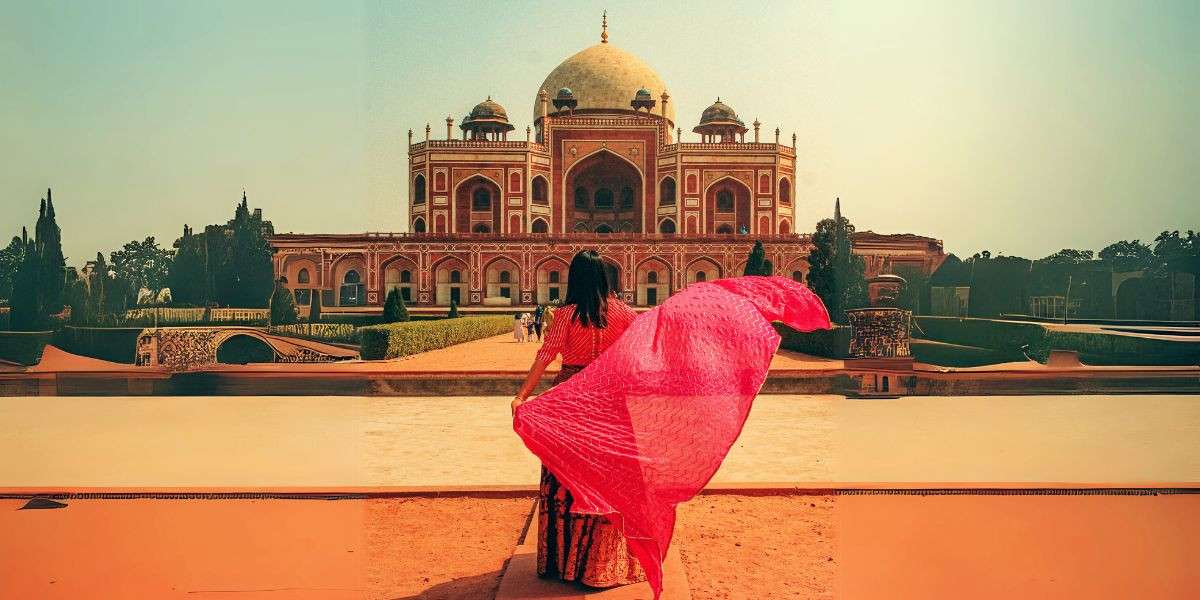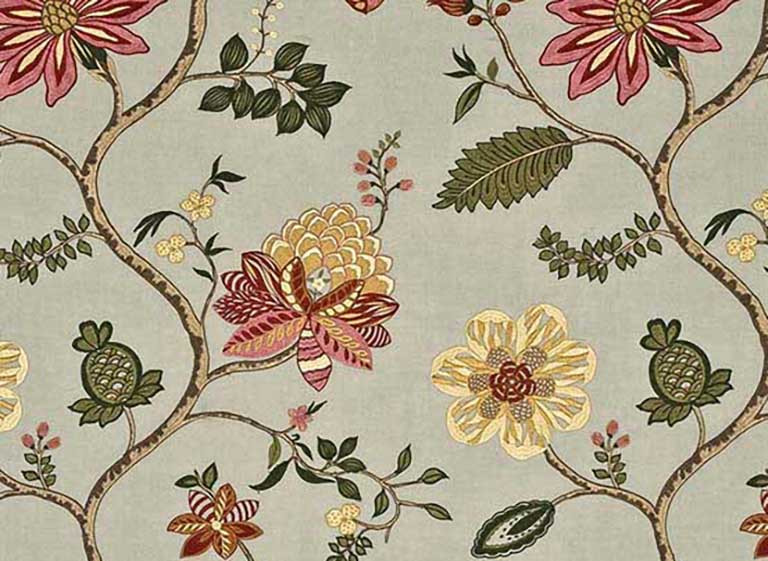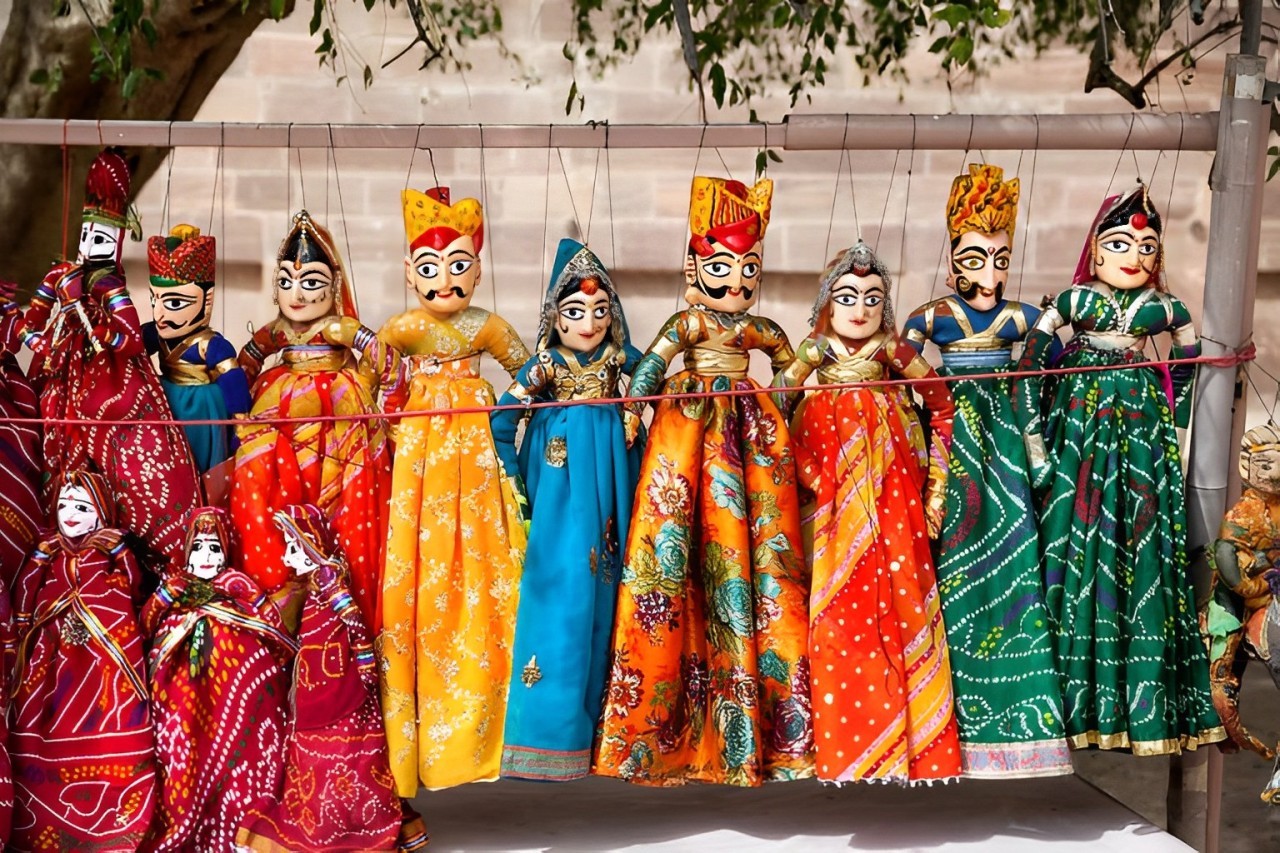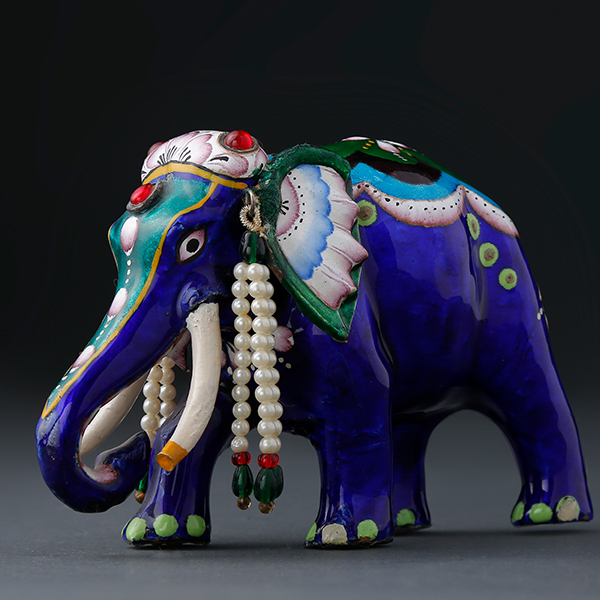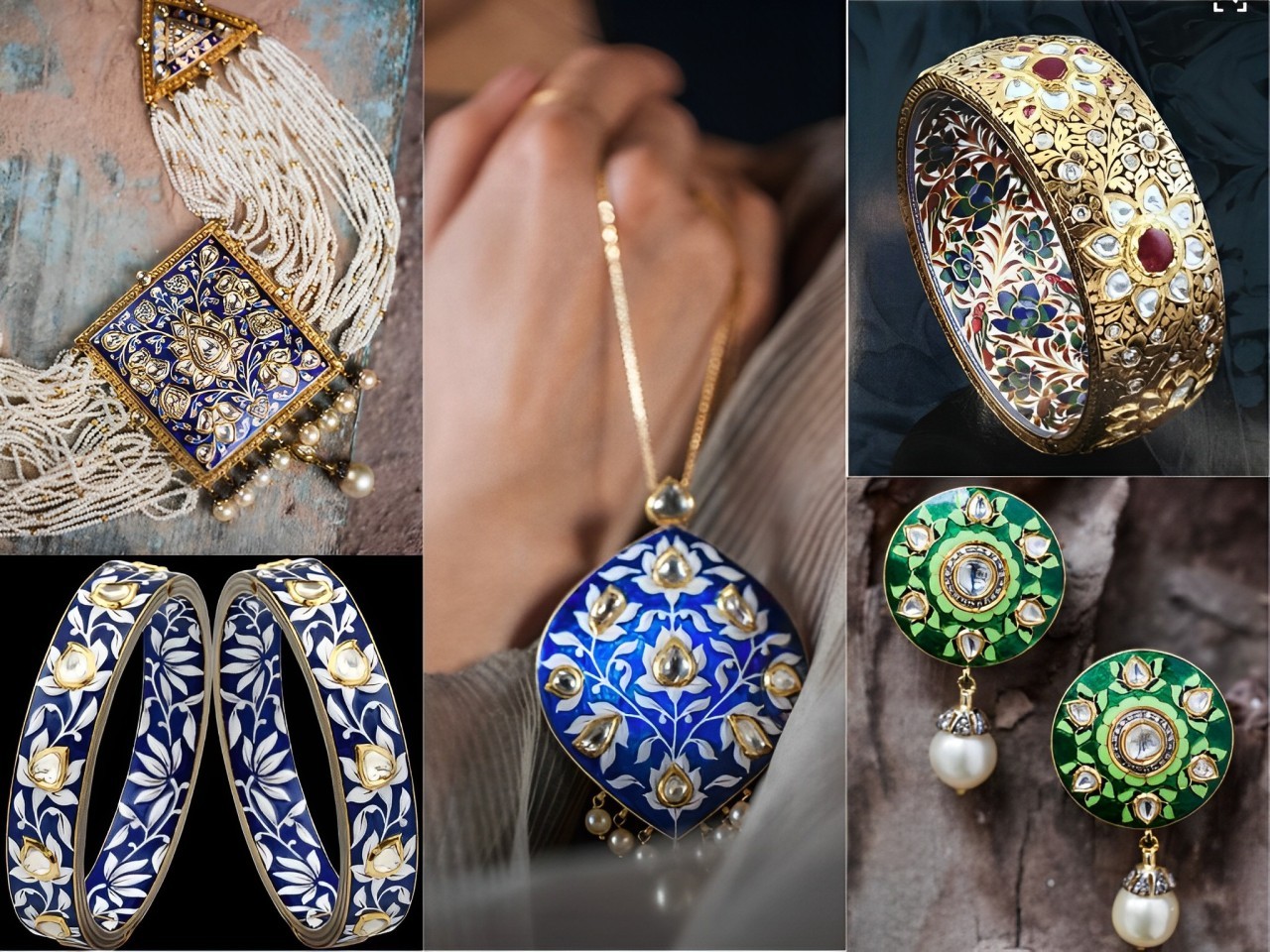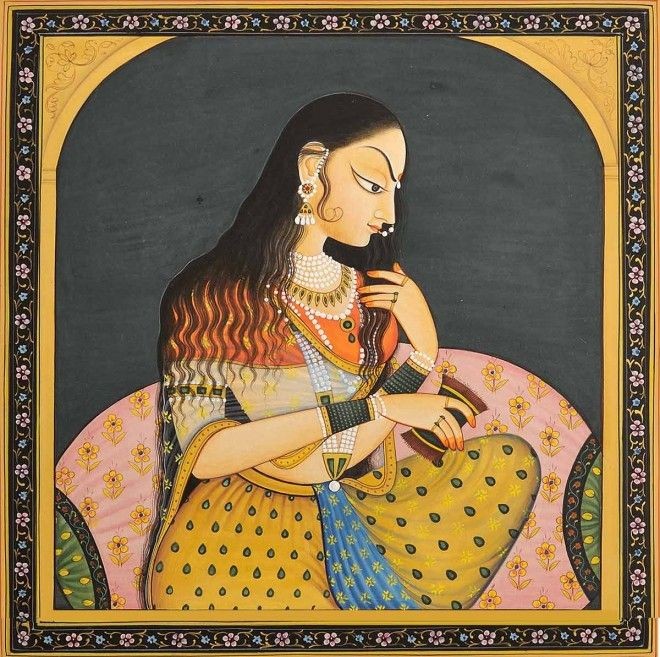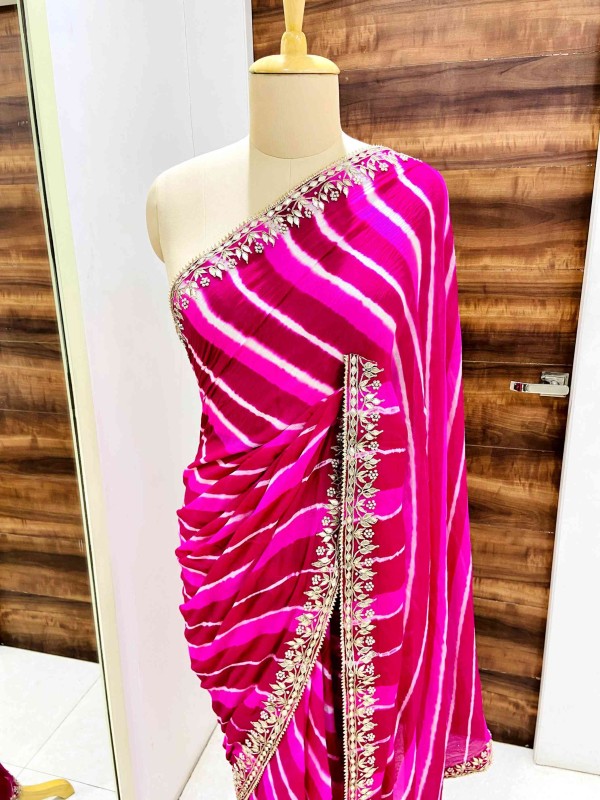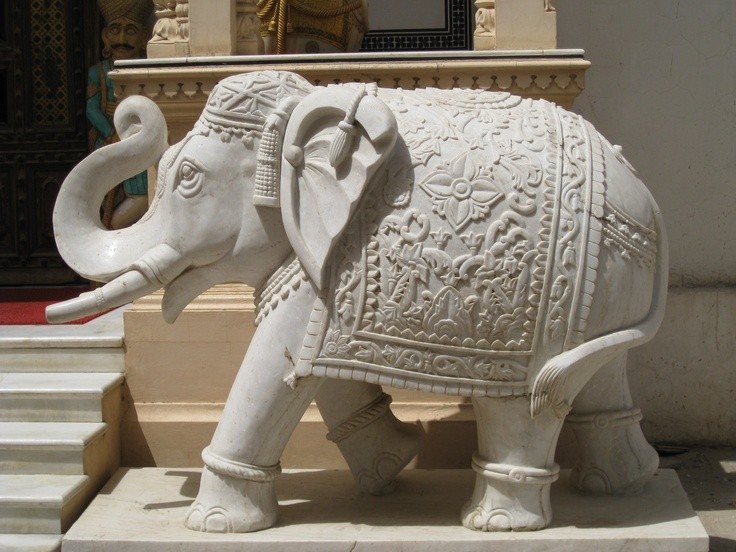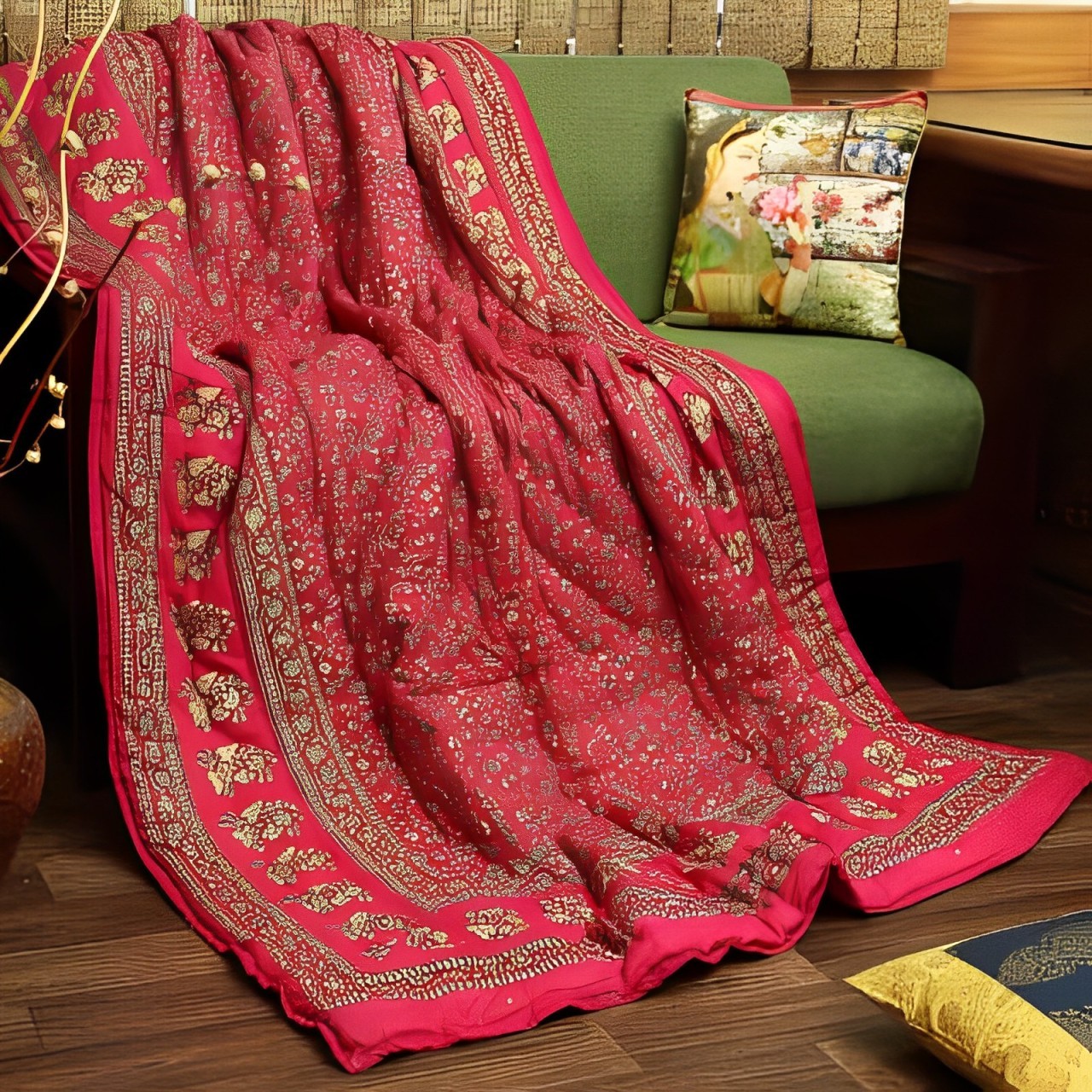Blue Pottery
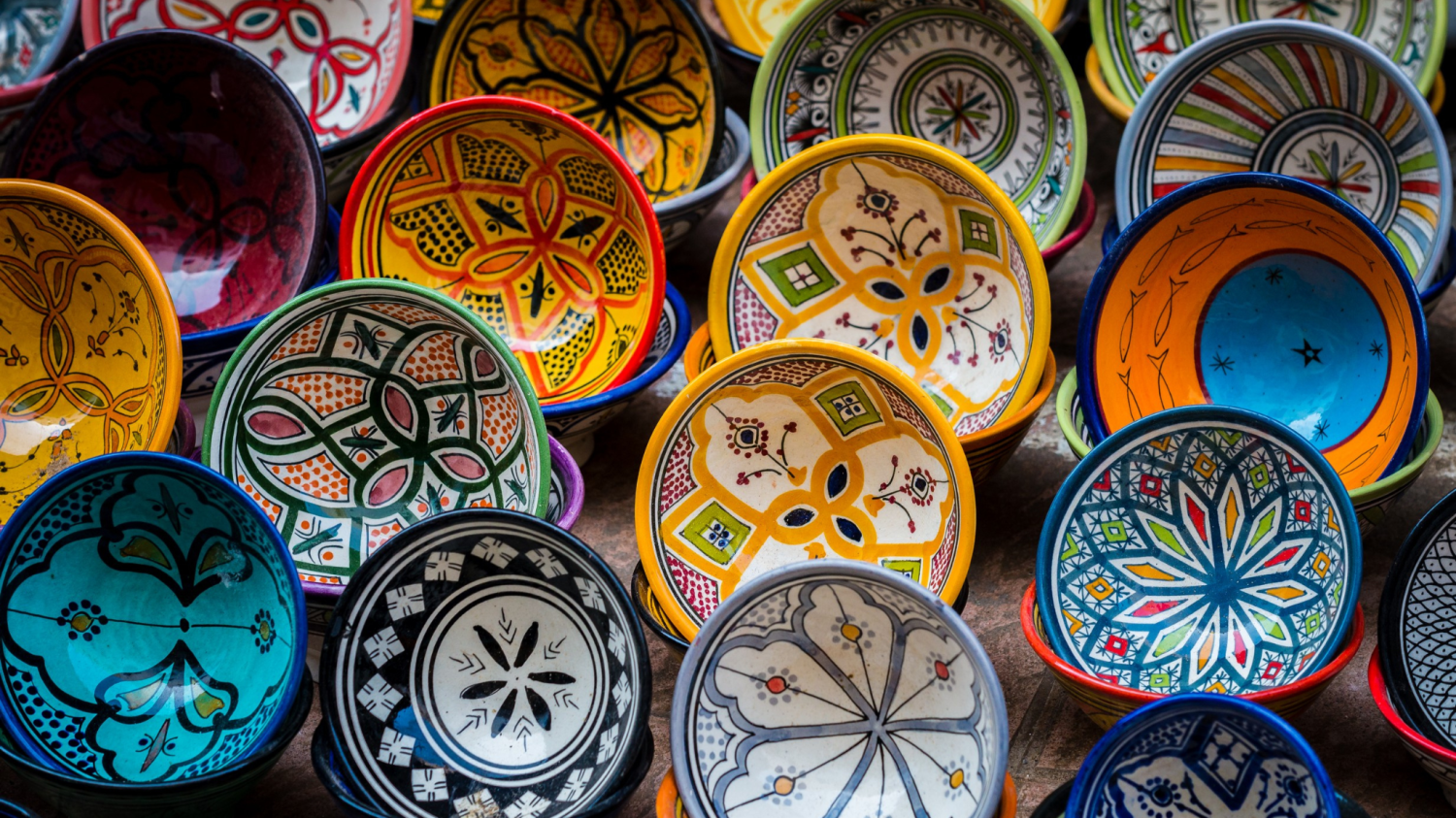
Blue Pottery is widely recognized as a traditional craft of Jaipur, India. The name 'blue pottery' comes from the eye-catching cobalt blue dye used to colour the pottery. It is one of many Eurasian types of blue and white pottery, and related in the shapes and decoration to Islamic pottery and, more distantly, Chinese pottery.
Jaipur blue pottery has strong influences of the Persian ceramic style but it has developed its own designs and motifs. Inspired more from nature, the pottery is adorned with profusely animals, birds and flowers with a hint of Persian geometric design in the compositions. Some of this pottery is semi-transparent and mostly decorated with Mughal arabesque patterns and bird and other animal motifs. Thus, the semi-transparent pottery has a gentle mix of Mughal arabesque patterns with bird and other animal motifs forbidden in Persian art of Islamic origin.
Jaipur blue pottery, made out of ceramic frit material similar to Egyptian faience, is glazed and low-fired. No clay is used: the 'dough' for the pottery is prepared by mixing quartz stone powder, powdered glass, Multani Mitti (Fuller's Earth), borax, gum and water. Another source cites Katira Gond powder (a gum), and saaji (soda bicarbonate) as ingredients. Like pottery it is fired only once. The biggest advantage is that blue pottery does not develop any cracks, and blue pottery is also impervious, hygienic, and suitable for daily use. Blue pottery is beautifully decorated with the brush when the pot is rotated. Thus it has great utilitarian as well as aesthetic significance.
Being fired at very low temperature makes them fragile. The range of items is primarily decorative, such as ashtrays, vases, coasters, small bowls and boxes for trinkets. The colour palette is restricted to blue derived from the cobalt oxide, green from the copper oxide and white, though other non-conventional colours, such as yellow and brown are sometimes included. The products made include plates, flower vases, soap dishes, surahis (small pitcher), trays, coasters, fruit bowls, door knobs, and glazed tiles with hand painted floral designs. Sometimes, designer pieces for display are also made. The craft is found mainly in Jaipur, but also in Sanganer, Mahalan, and Neota.
History:
The use of blue glaze on pottery is an imported technique, first developed by Mongol artisans who combined Chinese glazing technology with Persian decorative arts. This technique travelled east to India with early Turkic conquests in the 14th century. During its infancy, it was used to make tiles to decorate mosques, tombs and palaces in Central Asia. Later, following their conquests and arrival in India, the Mughals began using them in India. Gradually the blue glaze technique grew beyond an architectural accessory to Indian potters. From there, the technique travelled to the plains of Delhi and in the 17th, century went to Jaipur.
Other accounts of the craft state that blue pottery came to Jaipur in the early 19th century under the ruler Sawai Ram Singh II (1835 – 1880). The Jaipur king had sent local artisans to Delhi to be trained in the craft. Some specimens of older ceramic work can be seen in the Rambagh Palace, where the fountains are lined with blue tiles. Sawai Ram Singh, in his reign (1835-1880), promoted art in Jaipur state with dedication. Legend says that impressed by the art of blue pottery, he brought artists from Delhi to Jaipur. However, Jaipur Blue Pottery introduced original innovations and mastered the art in such a way that it was claimed to have surpassed the Delhi pottery. Back in 1916, The Journal of Indian Art recorded that Jaipur ware was an improvement upon Delhi pottery. His successor Sawai Madho Singh patronized an exhibition of industrial arts and crafts in 1883 in which finest blue pottery pieces were exhibited with other arts and crafts. Prized possessions of the exhibition were displayed in a museum like space in the exhibition. Many of artisans had been trained in the school of art opened by Sawai Ram Singh and the then director of the school, Opendronath Sen, who had worked particularly to promote the blue pottery, was also happy to see it being showcased in the exhibition. Jaipur School indigenised the art of Blue Pottery through designs that were drawn from Indian life like Indian animals, Hindu deities, Indian human figures, features of Indian palaces etc.
However, by the 1950s, blue pottery had all but vanished from Jaipur, when it was re-introduced through the efforts of the muralist and painter Kripal Singh Shekhawat, with the support of patrons such as Kamladevi Chattopadhaya and Rajmata Gayatri Devi. Today, blue pottery is an industry that provides livelihood to many people in Jaipur. Jaipur blue pottery, despite new innovations in vessels and designs, has retained the traditional blue and adheres to the traditional motifs rendering it instantly recognisable. The fountains inside the Polo Bar and the Maharani Suite within the Rambagh Palace complex are examples of some of the finest craftsmanship of Jaipur Blue Pottery and evidence the support of royal patronage to the art.
Motifs:
Some of this pottery is semi-transparent and mostly decorated with animal and bird motifs. The range of items is primarily decorative, such as ashtrays, vases, coasters, small bowls, and boxes for trinkets.
Colours:
The colour palette is restricted to blue derived from the cobalt oxide, green from the copper oxide, and white, though other non-conventional colours, such as yellow and brown are sometimes included.
Design and Products:
The craft was initially used for decorating the temples, mosques and palace. With new interventions and market demands whole new range of products were introduced. Today artisans make all sort of possible things in blue pottery along with the traditional product.
Product range from Surahi (arrow necked water jugs), flower vases, cylindrical jars, plates, small bowls, ashtrays, essence holder, lamp stands, coasters, mirror frames, soap dishes, paper weights, T-light holder, photo-frames, napkin rings, boxes for trinkets, beads, ear rings, knobs, hangers, decorative wall hangings, games, cups, mugs, tea sets, snacks tray, glazed tiles and games.
Tools and Raw Materials:
- Tools: The basic tools used in Blue Pottery are outlined below:
- Chakki (Grinder): The electrical grinding machine is used to grind the pieces of raw material (Saaji, Katria Gond, Multani Mitti and glass) into fine powder.
- Grinding Stone: A small grinding stone is used to grind Multani Mitti, Saaji, Katira Gond and glass. These stones are found on river bed and are available in local market.
- Jaali (Iron Sieve): Iron sieve is used to sieve/filter all the grinded raw materials for filtering out unwanted and big particles.
- Molds: Molds of desired shape and size are made out of Plaster of Paris in which the articles are casted. These Molds are long lasting if kept carefully.
- Tarazu (Weighing Tool): The dough is prepared by mixing Quartz Powder, Multani Mitti, Katria Gond, Saaji and glass in definite proportion. To weigh them the traditional weighing tool is used.
- Flattening Tool: Made out of fired clay, a flattening tool is used to flatten the dough which is then either cut into tiles or put in the molds to take the desired shape.
- Base Stone: It is a flat stone block on which the products are initially rubbed to smoothen the surface and remove unwanted material/coarseness.
- Regmaal (Sand Paper): Sand papers of different grains are used to make the surface of the product smooth. Generally the artisans use 60, 100 and 180 number of sand paper (more the number finer the grain) to rub the surface at different stages.
- Patti (Iron Blade/ Knife): The blades are used to remove the unwanted material from a product after casting and in order to give a uniform thickness to the product. The blades are also used to cut the dough. It is bent from front so that the scooping process becomes easy.
- Saancha (Iron Cutter): For basic shape of tiles, photo frames etc. which have definite size and are flat in nature artisans use saancha to cut them. This makes the work easy, less time consuming and accurate.
- Koochi (Broom): A small broom locally called as Koochi is made out of husk. It is used to brush off the dust generated while smoothing the surface with sand paper.
- Chaak (Potter's Wheel): The artisans in recent years have started using electrical wheels instead of the traditional hand driven one. The potter's wheel is generally used to make small piece, necks of the vases or base or a product.
- Brushes: Different numbers of brushes are used to paint beautiful motifs on the surface of a Blue Pottery product. Earlier the artisans used to make their own brushes using the hair from the squirrel's tail. These brushes were long lasting but now with the ban on these material artisans buy brushes from market.
- Bhatti (Heating Kiln): The final products are fired in a traditional closed kiln made out of clay and brick. These are generally circular in shape to trap the heat and can accommodate an average of 50-60 products kept on a patiya (cement plates) and separated by a nali (terracotta stands). They are closed from above and wood is put from below.
- Patiya (Cement Plates): Casted cement plates of certain shapes are used during firing to stack the final products on top of each other. This separation helps in flow of heat and avoids sticking of products. The shape of these plates is broad from behind and tapers in front. This shape fits well in a circular kiln and thus accommodates more products.
- Nali (Terracotta Stands): To create gaps between two patiya's three nali's are used. The stacking is done by keeping the products on one patiya then placing the nali's on three corners with the help of terracotta dough (which prevent unevenness) and then another patiya is kept on top of it.
- Raw Material: The raw material required in the making of Blue Pottery products are procured from the local market and are described as follows:
- Ground Quartz Stone: Quartz is procured from nearby places like Ajmer, Beawar, Udaipur and Neem ka Thana. Powered quartz is snow white in color and is the main raw material for which it is bought in bulk. The cost varies from Rs.2200 – Rs.2500/Ton (As of in the year 2011-12).
- Kaanch (Glass): Scrap or broken pieces of glass is used in the process. Earlier these glasses used to be bought from the local kabaadi shop free of cost, but now artisans buy it at the rate of Rs.8 - Rs.10/Kg. The glass once bought from the market goes through washing and then it is grounded into pieces. This is basically done by the women of the house during their free hours. These small pieces are then grinded into fine powder using a grinding machine. Glass is basically a mixture of Boric Oxide and silica which reduces the temperature and also helps in baking the quartz.
- Katira Gond (Edible Gum): Katira Gond acts as an adhesive and is readily available in the market. It costs Rs.100 ‐ Rs.120/Kg. The Gond is obtained in big pieces which then hand-grinded using a grinding stone on a stone base. This process is practiced by the women in the house. The grounded Gond is then turned into fine powder in the grinding machine and finally sieved in an iron Jaali (sieve).
- Multani Mitti (Fullers Earth): Multani Mitti or Fullers Earth is very fine in nature and is available in form of solid lumps. It cost Rs.18 – Rs.20/ Kg and can be easily found in a grocer’s shop.
- Saaji (Soda Bicarbonate/Bentonite): Saaji is an edible salt generally used in making papads. It is available in the form of small pieces and costs Rs.50 – Rs.60/Kg. It is also grounded and made into fine powder.
- Maida (Flour): Maida is used for coating the products and is also sometimes used as a substitute in place of Multani Mitti. It also acts as an adhesive. This can be procured from grocer’s shop for Rs.16 – Rs.18/Kg
- Colours: Two types of colours are used in Blue Pottery
- Oxide colours
- Ferro colours
The main colours used in Blue Pottery are
- Dark Blue – from Cobalt Oxide
- Light Blue – from copper oxide
- Green – from Chrome Oxide
- Bright Yellow – From Cadmium Oxide
- Brown – obtained from Ferro colours
- Raakh (Burnt Wood Dust): Raakh is used to give shape to the product when it is in a Mold. It is non-sticky and can be easily brushed off once dried.
- Wood: For firing purposes locally available and seasoned Khezadi wood is used.
- Other ingredients used are: Charcoal, Water, Borex powder, Zinc Oxide, Potassium nitrate, and Boric acid.
Making Process:
The making process of blue pottery product is very tedious and time consuming. It involves various stages. The whole process can be divided into following main steps;
- Making of the Dough
- Making of the Molds
- Casting of the Products
- Scrubbing
- Finishing
- Attaching the Base
- Smoothening
- Designing
- Colour Making
- Painting
- Glazing
- Firing
Making of the Dough:
The raw materials like quartz powder, Multani Mitti, scrap glass, Katria Gond, and Saaji are used to make the dough for Blue Pottery. Firstly, Multani Mitti, scrap glass, Katria Gond, and Saaji are broken and grinded into fine powder. After this, these raw materials are weighed in specific amount- quartz powder (40 kg), Multani Mitti (1 kg), scrap glass (7 kg), Katria Gond (1 kg), and Saaji (1 kg) and are mixed together with water on a clean floor. The mixture is kneaded properly to prepare non-sticky dough which is kept for at least 7-8 hours before using it.
Making of the Molds:
Artisans develop molds in Plaster of Paris (POP) to caste the desired shape of the blue pottery products. The dough used in blue pottery lacks plasticity due to which they can’t be hard-pressed on wheel to make large products. The products break as the dough is pulled up. Therefore, the products are casted in the molds. These molds are made in all desired shapes and sizes and then dried. One mold can be used for number of times if properly maintained. Small and easy product can be made in one mold, whereas complex items may involve more than two molds to make a final product. For example, a vase is made up in four parts. The central part is made out of two hemispherical molds. The neck and the base of the vase are turned on the potter’s wheel. All these four parts are joined together using the dough and the surface is smoothed.
Casting of the Products:
For casting of the products, desired amount of the prepared dough is taken and rolled over the base stone. It is then flattened using a flattening tool on the stone base till is gets a round shape like chapatti with an approximate thickness of 4-5 mm. This round shaped chapatti is then carefully placed in the mold. The mold is continuously wiggled so that the dough sets properly inside the mold. Once the dough is partially placed in the mold, the mold is filled with raakh (burnt wood dust) and is pressed gently so that the dough takes the exact shape of the mold. The extra edges of the dough which comes out of the mold are cut using a knife. After this the mold is turned upside down and removed. The prepared product along with raakh is kept for 1-2 days for drying.
Scrubbing:
After the product is dried and has taken the shape of the mold it is turned upside down and the raakh is removed from it. The extra raakh stuck on the walls are brushed off using a koochi (small broom). Generally, while placing the dough in the mold the dough achieves an uneven thickness making the walls of the product non-uniformed. To create the walls of uniform thickness the product is sprinkled with a small amount of water to make it leather hard. After that with the help of Patti (iron knife) the extra material is scooped off making the walls even. The product is dried again for few hours.
Finishing:
The dried product now undergoes several stages of finishing process, firstly the rough edges of the product is removed by rubbing it on the stone base. This process is done gently by hand. After that the product is rubbed with regmaal (sandpaper) to remove the major grains, which occur due to raakh and scrubbing.
Attaching the Base:
The products are added with a base wherever required. Generally, vases, small cups stand, etc. are provided with base to give them stability. The base is mainly fixed on the product (if round in shape) on the potter’s wheel. The product is turned upside down over the potter’s wheel and the base is sprinkled with water so that it gets leather hard. A small amount of dough is used along with some water to make the base. Once the base is made, the finished product is again left for drying for 1-2 days.
Smoothening:
The dried product with base now goes through another finishing process which is mainly focused on smoothing the surface for painting. Therefore, products are coated with a coat of dough mixed with water to fill the major holes and dried. Once dried it is rubbed with regmaal to smoothen the surface. A second round of coating is done once the product is rubbed. This time the product is dipped in the slurry, prepared by mixing quartz powder (10 kg), powdered glass (3 kg), Maida (edible flour, 2kg) and water. The process is done by hand in a way that the coating is done evenly. After drying the surface is again rubbed with regmaal and made ready for painting.
Designing:
Once the surface smoothing process is completed the product moves to design development process. Artisan makes designs from his imagination and seldom uses a tracing. All products are individually painted by hand. Designing starts with making the outlines on a dried coated surface of the product. If the product is circular in shape it is placed on the potter’s wheel and the brush tip is touched on the surface while the wheel is rotating and thus the outline is made. The further intricate designs are made by hand using brushes of different sizes.
Colour Making:
The colours used in Blue Pottery are mainly oxides and sometime Ferro metal. These oxides are available in the market in form of small lumps. The lumps of oxides are mixed with edible gum and made into powdered form by grinding. Edible gum acts as a binding agent.
Painting:
The designs/outlines made on the products are now filled with the oxide colours using fine brushes. The main colours used in Blue Pottery are blue, green, yellow and brown. The product is kept for drying once painted.
Glazing:
After the paint is dried the product is glazed. A special glaze is prepared using different raw material in definite proportion. A mixture of powdered glass (21kg), Borex (17 kg), zinc oxide (1 kg) potassium nitrate (2 kg) and boric acid (7 kg) is prepared and heated till it melts. The mixture is allowed to cool and lumps are obtained which are again grounded into fine powder. This powder is further mixed with Maida(flour) and slurry is prepared using water. The final products are dipped in this solution in a way that it gets an even coating. The product is finally dried in sun.
Firing:
The products prepared so far taken for firing in a closed kiln. They are stacked inside the kiln one on top of the other, separated by patiya and nali. The stacking is done with utmost care so that no two products stick to each other, there is proper circulation of heat within and the kiln is uniformly packed. If products stick to each other there are possibilities of them turning black. After stacking the kiln is closed from top. Heating is done from below using wood and charcoal. The temperature goes up to 800-850 degree Celsius. The firing process takes almost 4-5 hours. Thereafter, the kiln is left for slow cooling for 2-3 days. Any drastic change in temperature may lead to develop cracks in the products. Once the kiln is cooled, it is opened and the products are taken out and checked. In case of rejection, the pieces are separated. The final products are cleaned and are packed for the market.

